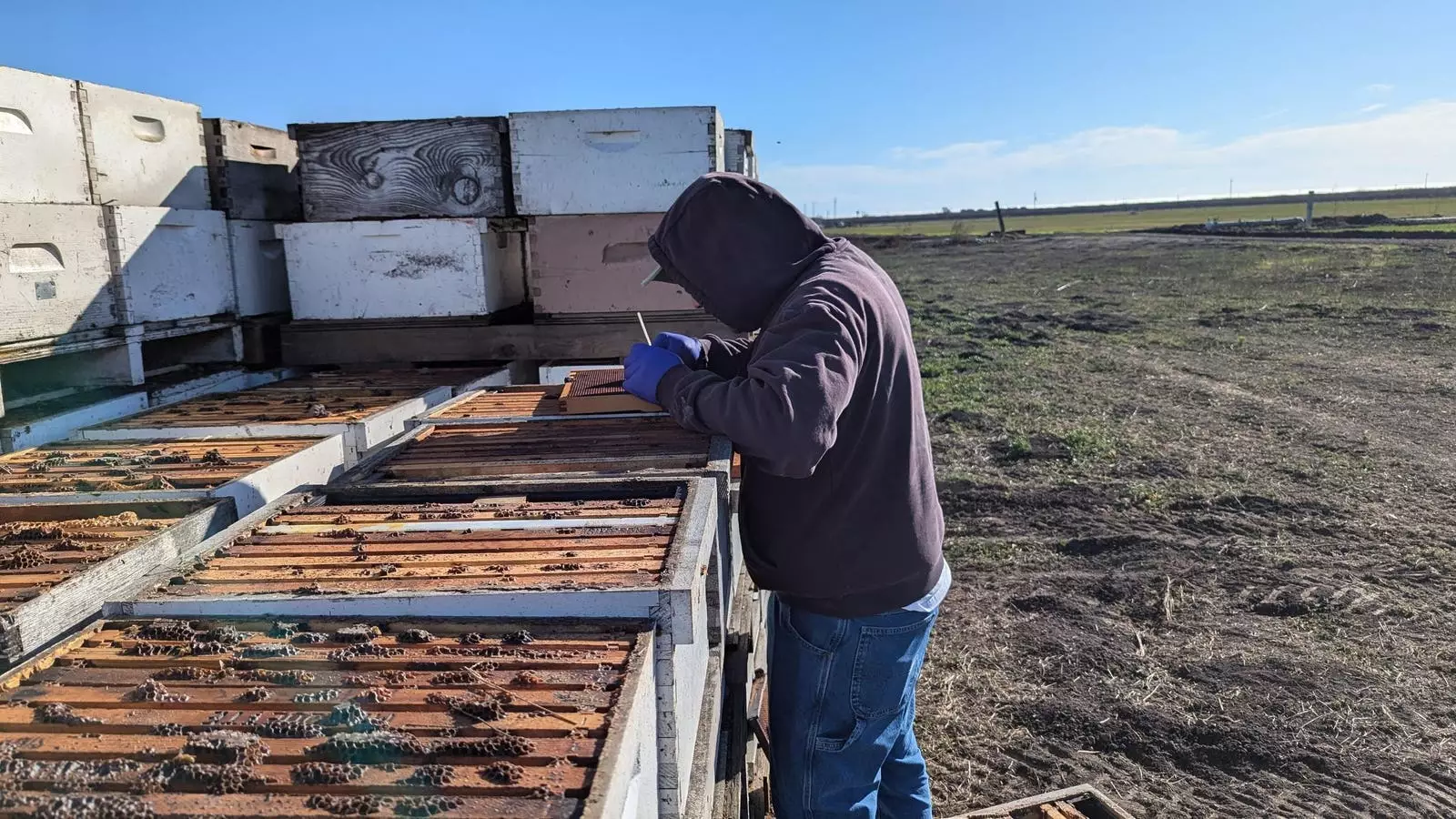The alarming decline of bee populations has reached unprecedented levels, raising significant concerns within the agricultural sector and among environmental advocates. Recent reports indicate that millions of bees perished over the winter months, leaving beekeepers grappling with losses exceeding 50%. This catastrophic event has not only threatened biodiversity but has also resulted in considerable financial implications, with losses estimated at over $139 million. These figures, derived from a comprehensive survey involving 234 beekeepers, were unveiled just as the crucial California almond pollination season kicks off, emphasizing the urgency of the situation.
California’s almond orchards, which rely heavily on the mass transportation of bees for pollination, are particularly vulnerable. As the demand for pollinators spikes during this pivotal growing season, the alarming scarcity of bees poses a risk to almond yields. Beekeeper Danielle Downey of Project Apis m. articulated the industry’s current panic, stating, “There’s a full panic right now to figure out what’s wrong and how bad it’s going to be.” With many beekeepers discovering that a significant portion—or even all—of their bee colonies are either deceased or missing, there’s a push for scientific investigation into the underlying causes of this die-off.
While almond production is currently at the forefront, the repercussions of the bee die-off extend far beyond just one crop. Bees play an essential role in pollinating a multitude of fruits, including blueberries, cherries, cranberries, and apples. The potential impact on food availability and prices is a pressing concern for consumers. The loss of bees could lead to reduced crop yields, ultimately manifesting in grocery shortages and heightened prices for these staple foods.
The current crisis recalls the infamous Colony Collapse Disorder (CCD) phenomenon that shook the beekeeping world between 2007 and 2008. During CCD, many beekeepers reported sudden departures of adult bees from their colonies, indicative of systemic issues within the bee population. Field investigations revealed that colonies often had sufficient food supplies yet suffered substantial adult bee losses. This time, however, industry experts like Blake Shook express a gnawing fear: the current losses may be even more alarming than those experienced during the CCD period due to the soaring baseline loss rates.
The U.S. Department of Agriculture’s Bee Research Laboratory is currently examining the various causes behind this die-off. Typical culprits such as the varroa mite and other pathogens have not been implicated in the current situation, which adds to the mystery and urgency surrounding this crisis. Downey emphasized the need for a thorough analysis of potential stressors affecting bees, including environmental factors, nutrient deficiencies, and pesticide exposure.
The financial burdens imposed by this unprecedented bee loss are immense. Beekeepers like Tim Hollmann have already spent significant resources to replace their bees following previous die-offs and are now experiencing similarly high mortality rates. The daunting prospect of financial instability looms over beekeepers who fear they may not survive this continuous cycle of loss.
Adding another layer of complexity, beekeepers are also facing market pressures from imported honey, which poses competition to American honey producers. Hollmann’s experience highlights how multifaceted these threats are, encompassing both environmental challenges and economic realities.
As a response to the dire circumstances, some beekeepers are resorting to extreme measures, including the theft of bees from fellow operations. With incidents of hive theft reportedly increasing by 87% in California since 2013, beekeepers now face not only environmental challenges but also criminal threats. This trend reflects the desperation permeating the industry, leading to cooperative efforts aimed at protecting hives from theft and securing a sustainable future for beekeeping.
The current bee die-off represents a critical juncture for both beekeepers and the agricultural landscape at large. The implications of these losses extend far beyond the beekeeping industry; they touch upon food security, environmental health, and economic stability. A comprehensive response is urgently needed to investigate the root causes of this crisis and to implement effective strategies for bee conservation. As we move forward, it is essential to prioritize the health and survival of honeybee populations, which are pivotal to the sustainability of our food systems. Without bees, the future of many crops hangs in the balance, and with it, the ability to feed the population may be compromised.


Napsat komentář